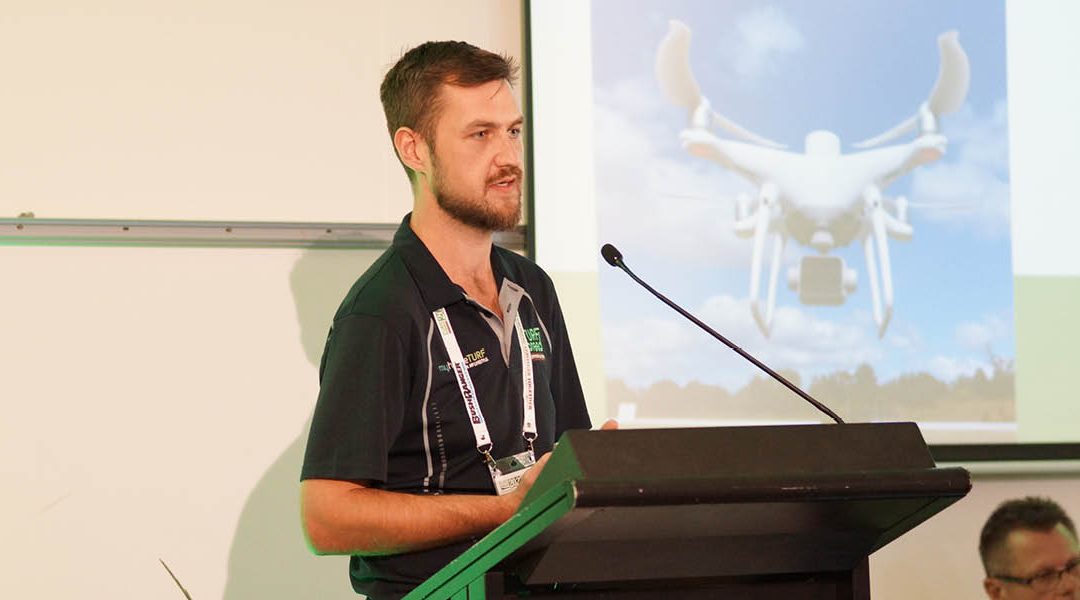Developing an effective research and development program is a pivotal goal for TurfBreed. With that said, TurfBreed has placed a major emphasis on developing its Turf RnD Facility in Queensland and now Victoria. Katie Fisher talks to Dr Andrew Fletcher about both it’s vision and program.
Andrew is heading up TurfBreed’s RnD branch (TurfRnD), and has identified the need for more turf research and development across Australia, and has developed five key goals for TurfRnD to meet the future demands of growers and turf consumers.
- Establish an industry leading R&D facility – something identified as really not in existence in Australia.
- Explore new genetics – Both locally and working with US Genetics companies & Universities
- Build knowledge in TurfBreed’s existing varieties – conducting fundamental research in our existing varieties.
- Provide further support to growers and consumers with resources to help get the best results and promote TurfBreed’s varieties.
- Conduct commercial research with partner companies – Syngenta, the University of QLD and Melbourne Polytechnic.
Inside QLD’s RnD Facility – QLD
Based in QLD near Brisbane, TurfBreed’s purpose-built, controlled environment research facility houses a spacious glass house where propagation occurs on all our new varieties as well as studies on our existing material.
The Facility also gives TurfBreed the opportunity to do controlled weather independent studies on grass varieties looking at features such as water use.
TurfBreed strives to be at the forefront of industry leading technology
“One of the first things I identified when coming into the role was the opportunity for greater adoption of modern technology in the turf industry.”
“However, this area is fairly easy to move into because it has been tried and tested in other industries, such as remote imaging (UAV – drones) and multispectral sensing,” Andrew explained.
“Some growers might be familiar with the concept of vegetative indices such as Normalized Difference Vegetation Index (commonly known as NDIV) which allows you to assess crop health of an entire paddock in a single image.
“This can be done by flying a specialised drone over your paddock, or using a satellite, to inspect your farm. You can then identify, for instance, areas under stress that need watering, areas with high weed pressures, or that are stressed due to disease or nutrition.
“I firmly believe there is a good place for this technology in turf.”

Figure 1: NDIV technology allows the inspection of a crop’s health and growth without having to walk onto the paddock.

(Above) Drone captured images processes into NDIV of three turf plots under different managements, showing that one of them (Plot 3) is near death.
Another area Andrew has been working on is using drones to look at basic measurements, such as quantifying the actual growing rate of turf and measuring the percentage of “grow in” over time.
Figure 2: Advanced image analysis techniques can show a crop’s percentage “grow in” over time.

This technology now allows researchers, like Andrew, to use advanced image processing to get a better understanding of exactly how fast different varieties grow back from planting or harvest, and how they might respond to being stressed or having fertiliser applied. For instance, Figure 2 shows that 12 weeks after planting coverage went from 6 percent to 61.57 percent.
So how does TurfBreed use and leverage this technology and then apply it to give growers meaningful data?
Andrew uses the technology to assess TurfBreed’s and other varieties and then provides all relevant data back to growers and specifiers.
“For example, growers and specifiers can use the results to show the traits of a particular turf variety when tendering to councils for roadside plantings etc…,” he said.
Root Establishment work
One of the key variety trait’s growers, specifiers and consumers want quick root establishment.
Therefore, another key project at the Turf RnD facility is a root establishment trial.
“Using a randomised and replicated design, we are testing which varieties root down and establish the fastest after been laying,” Andrew said.
Figure 3: A replicated trial testing the genetic difference in rooting and establishment after laying.

Andrew laid the turf over some fly screen (below) so he could pull it up and access how much root growth had occurred over a period of two weeks.

“It is a relatively simple trial approach, but as you can see – the image below shows Prestige Buffalo two weeks after laying where it has “put down” significant roots into the soil layout after laying,” he said.
Figures 4: Reviewing the root establishment of Prestige Buffalo from day 0 to 4 weeks (L->R).

Another example of Andrew’s trial work is looking at turf sample cores across four weeks from laying.
“Each week I took a 20 cm plug from the replicated turf site to ascertain root growth of Prestige Buffalo,” he explained.
“The image far right in Figure 4 is a root growth chamber I built to watch about a month and a half of root growth. These sorts of images demonstrate how turf is not just at ground level but it goes quite deep and homeowners/consumers have to consider this when laying and maintaining their turf.
“It is not just about what is happening on the surface, but they also need to understand what is happening below.”
Commercial Application Trials
Roadside trial work is also underway. Andrew is trialling varieties that have low input applications to demonstrate the suitability for growers and commercial users:
- Input requirements – fertiliser, herbicide, water etc…
- Mowing requirements – frequency, clip, aesthetics etc…
From these trials Andrew will produce science-based resources to support decision making.
“Most importantly we want to look at these specific varieties in multiply growing environments, such as QLD, New South Wales and Victoria, so the results are relevant to the wide range of markets across the County,” he said.
Quality Assurance and PBR Oversight
Another aspect of the job we do is quality assurance and PBR oversights. Within our facility we can do grow-out trials, and through our industry partnerships we have access to DNA testing to verify that our varieties are true to type and genetically pure. And we can also support our own PBR application to protection of IP rights – we can make sure that if people are infringing on our PBR we are able to detect and follow up appropriately.
Fostering the Next Generation of Turf Experts
When coming into the Turf Industry, another thing Andrew observed was a lack of younger people coming through the education system with a focus on turf production and research.
“I believe we need to have more young people wanting to become turf experts in say TAFEs or Universities,” he said.
“Currently TurfBreed has an Honours student from the University of QLD working on a couple of our projects. I have also been involved with a few TAFEs across the Country helping them establish turf plots so they can educate their students.
“This is an area we are growing across all states with the help of TurfBreed’s Business Development Managers.”
Looking Ahead … Building a Future with New Genetics
“It goes without saying the TurfBreed is actively looking at new turf genetics that will suit both the grower and consumer markets,” Andrew explained.
“As previously explained, our partnership with the United States turf breeding company – Mountain View Seeds – has seen us explore new genetics with IronCutterä Hybrid Bermudagrass.

“Obviously, Australia is large and has diverse growing environments (rainfall in summer or rainfall in winter). Obviously, we can’t always have a grass variety that suits every single climate and every different market sector’s needs.
“That is why it is so important that we maintain good, replicated trial sites across all states to ensure that we are providing a grass that meets the needs of our consumers, as well as providing our growers with the knowledge they need to produce it to the highest possible quality.”
For instance, our research looks at how turf varieties suit the following states.
In Queensland
- Tolerate heat, dry and tropical weather
- Tolerate moderate winters
- Prefer slower growing
In NSW, VIC, SA
- Tolerate hot dry summers
- Tolerate harsh winters
- Tolerate low sunlight
“Our trial work aims to benefit many different turf applications,” Fletch said.
Civil projects:
- Quick establishment
- Low input
Sports:
- High input
- Surface suitability
- Recovery and wear tolerance
- Strength
Residential:
- High shade tolerance
- Wearability and recovery
- Maintenance
- Drought tolerance
“Different market segments want different traits, and we want to be able to treat their grass differently. So, when we look at new genetics, we need to factor in all the above features,” Andrew said.
“When it comes to genetics verses phenotype (traits) we need to combine the two.
“Today, there are tools available to do this -we can sequence the entire genome of individual turf varieties (which has been done in several other major crops) and then grow them in multiple environments to ascertain which genes are correlated with traits that we’re looking for (for example, drought tolerance, cold tolerance, etc…).”
Andrew further explained that: “The basic idea of the approach was to sequence as many unique varieties as possible from as many geographical locations as possible.
“The geographical, morphological and genetic diversity of these varieties will help us understand which specific genes promote beneficial traits, and then we can investigate breeding new varieties that have as many of the beneficial genes as possible.
“Looking ahead, this sort of research is a number of years in the making but it is the future and we are quite excited about exploring and sharing the results with our TurfBreed growers.”

